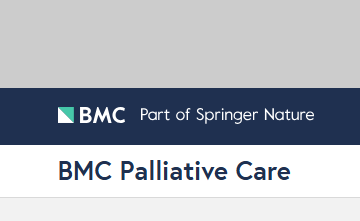
Supporting relatives when general palliative care is provided at home– a focus group study based on nurses’ experiences
- Post by: Alper Idrisoglu
- 8 May, 2025
- Comments off
Abstract
Background
Relative’s efforts are essential when palliative care is provided at home and support from healthcare professionals is needed. Despite this, since the support provided varies, relatives may have unmet support needs. Many people receive general palliative care at home rather than specialised care, and nurses play a significant role in supporting relatives. This study aimed to explore registered nurses’ experiences of supporting relatives before and after a patient’s death when general palliative care is provided at home.
Methods
This study used a qualitative explorative design. Data were collected through focus group interviews with 18 registered nurses in home care in Sweden and were analysed using content analysis. The Consolidated Criteria for Reporting Qualitative Research checklist was used for explicit reporting.
Results
The findings are presented in four categories with subcategories: receiving support to provide support, continuously providing understandable information, balancing different needs and building relationships facilitates safety and identifying needs.
Conclusions
Even if registered nurses support relatives to some extent, they rarely reflect on the support they provide and lack structure in providing support both before and after the patient’s death. The findings showed inadequacies in support after the patient’s death, which is also emphasised in previous studies. The findings also showed deficiencies in routines, local guidelines and checklists as well as in training and education on how to support relatives when palliative care is provided at home, thereby risking that relatives’ needs remain unmet. This highlights the need for creating routines and developing detailed local guidelines and checklists on providing support to relatives both before and after the patient’s death.
Link: https://doi.org/10.1186/s12904-025-01744-z
